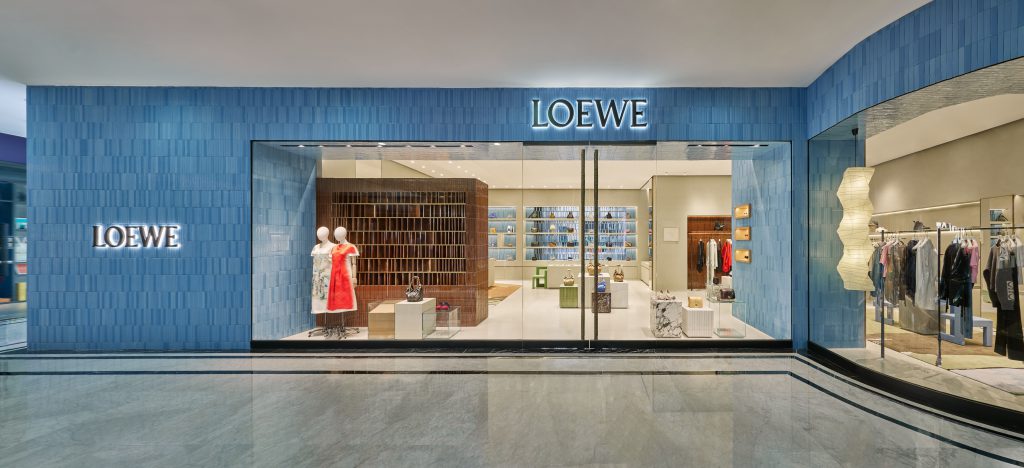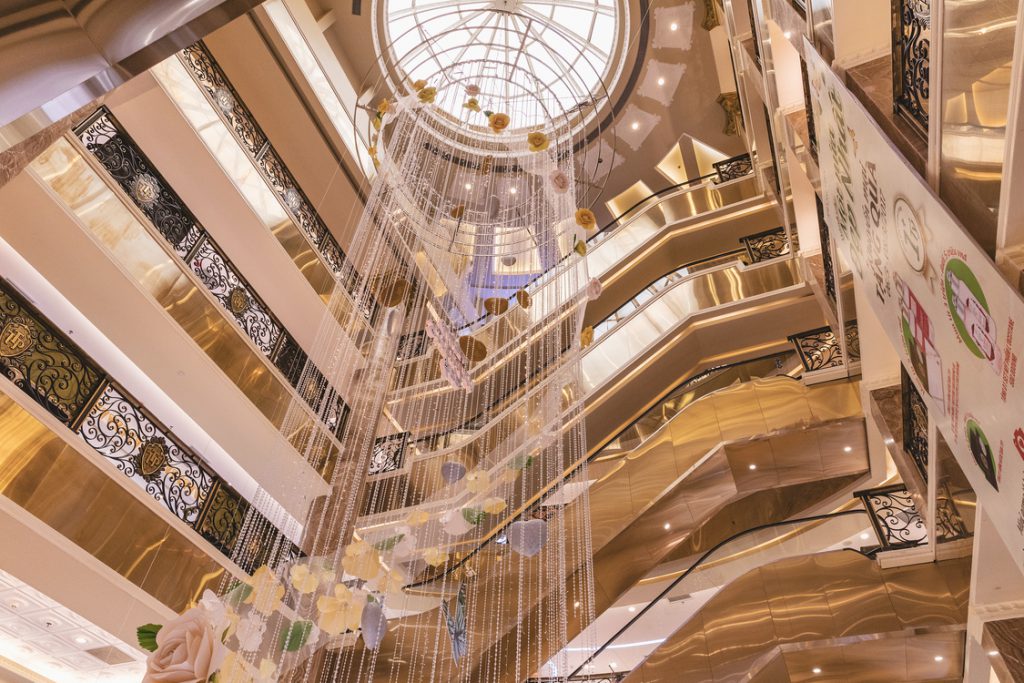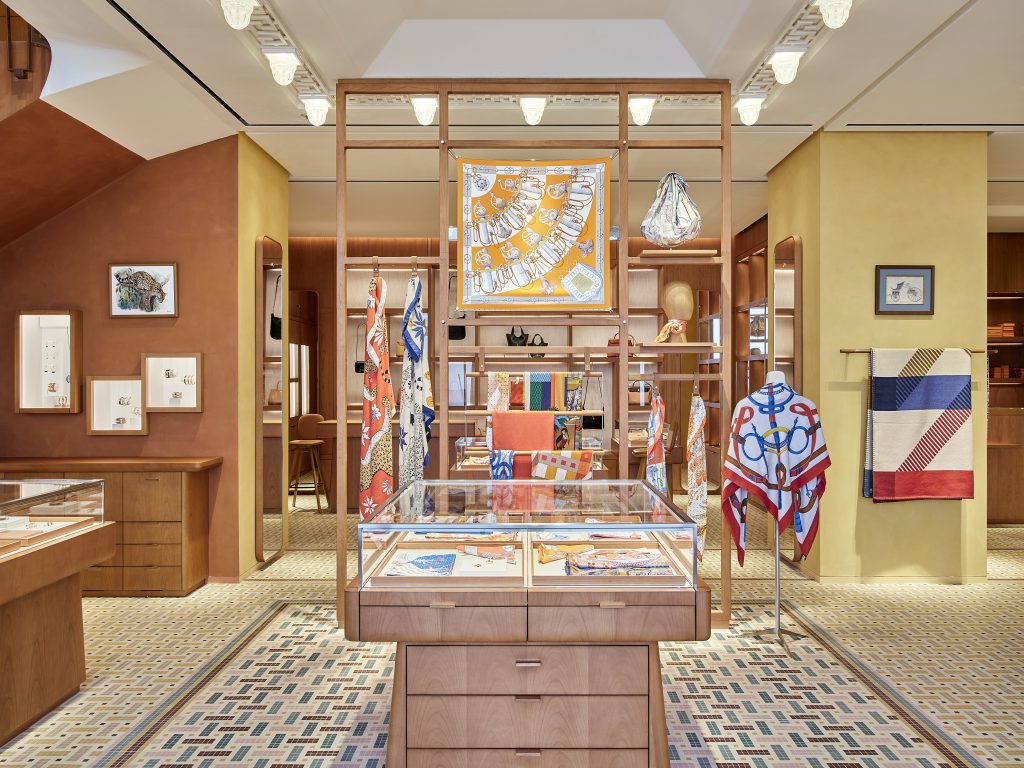Story: Thang Nguyen
Photos: Provided by brands
Vietnam is turning into a “promised land” for luxury brands thanks to growing numbers of wealthy people, an open consumer culture, and mor.
When South Korea’s largest shopping mall complex in Vietnam opened in Hanoi last September, it attracted 233 major brands. Famous luxury names included French fashion brands Karl Lagerfeld and Maison Margiela; American shoes and sportswear firm Foot Locker; high-end Spanish fashion Massimo Dutti, and accessories and cosmetic brands like Marhen.J, Lush, Jo Malone, and Diptyque.
This gathering of luxury labels shows that Vietnam is becoming a destination for the world’s leading brands. More broadly, it reflects how the luxury market isn’t shrinking here, but growing.

More wealthy and ultra-wealthy consumers
According to a Wealth Report by Knight Frank Vietnam Company Limited, one reason why Vietnam is attracting famous brands and luxury fashion houses from around the world is the rapid increase in the number of wealthy and ultra-wealthy people.
In Vietnam, the number of “super-rich” people (those with over USD 30 million in net assets) nearly doubled between 2017-2022. At the end of 2022, this figure was 1,059. Knight Frank estimates that by 2027, Vietnam will have 1,300 “super-rich” people, a 122% increase over the last decade.
Not only the super-rich group, but Vietnam’s “wealthy” group (those who own USD 1 million or more) also increased by 70% in the past 5 years and is expected to rise by 173% between 2017-2027, also according to the Knight Frank report.
Many monetary and banking experts believe that in reality, the number of people with assets of more than USD 1 million in Vietnam may be even higher than shown in this report, as real estate prices in many places in Hanoi and Ho Chi Minh City have risen sharply in the past 5 years. Villas often cost tens to hundreds of billions of Vietnam dong, and a townhouse can cost over USD 1 million.
Vietnam has a traditional culture of not flaunting wealth, and currently many people do not want to publicly disclose this “sensitive” information about their assets for various reasons.
Growing numbers of wealthy people makes this an attractive market for luxury brands. It is not surprising that the Commercial Leasing Department of Savills Hanoi assesses that the Vietnamese market in general and Hanoi in particular is becoming an ideal destination for international brands, from fast fashion to high-end and luxury segments.
Meanwhile, a Statista report also stated that Vietnam’s luxury goods market in 2022 increased by 34% over the previous year and is forecast to continue growing at a compound rate of 4%/year until 2025.
A “Promised Land” for luxury brands
The luxury industry generates huge revenues, despite only serving a small customer base. In the 2020-2022 period, Gucci, Chanel, Christian Dior, and many other brands all recorded high growth in Vietnam.
According to data from Vietdata, the fashion house with the highest revenue in Vietnam’s luxury segment is currently Louis Vuitton. In 2022, Louis Vuitton recorded revenue of VND 2,360 billion from the Vietnamese market, up nearly 50% over the previous year; the brand’s profit after tax also increased 69% compared to the previous year, reaching VND 330 billion.

Similarly, Chanel’s 2022 revenue in Vietnam reached VND 2,186 billion, up 57% compared to 2021, and the company’s profit after tax nearly doubled, reaching nearly VND 540 billion. Notably, in the 2020-2021 period, Chanel in Vietnam grew at an average rate below 20%/year; exponential growth only occurred from 2022.
In the same luxury segment, Dior recorded VND 1,718 billion in revenue from the Vietnamese market in 2022, up one and a half times compared to 2021, and accordingly, profit after tax also more than doubled from the previous year, reaching over VND 558 billion. Dior’s business activities in Vietnam have also achieved very good growth in recent years.
In 2022, Gucci brought in VND 1,084 billion in revenue and VND 282 billion in profit after tax from the Vietnamese market, up 67% and 239% respectively over the previous year. This is also the first year the brand reached trillion VND revenue in Vietnam.
Not only luxury fashion brands saw high growth in 2022, but Vietnamese distributors working with them also thrived during this period.
According to data from Vietdata, domestic distributors such as Mitra Adiperkasa, IPPG, Tam Son, and Maison all recorded high revenue growth in recent years.
Among them, Tam Son International JSC – the retailer of many big brands such as Hermès, Patek Philippe, Chopard, Loewe, Boss, Rimowa, Bang & Olufsen, etc. recorded 60% revenue growth in 2022.
In 2023, Tam Son International JSC continues to expand its distribution portfolio with 8 new brands, bringing the total number of distributed brands to 32, with a system of 72 stores in Hanoi and Ho Chi Minh City.
Similarly, the “King of Luxury Goods” Johnathan Hanh Nguyen’s Imex Pan Pacific Group (IPPG) saw high growth, through the two companies DAFC and ACFC, which distribute many foreign brands, including Rolex, Burberry, Armani Exchange, Nike, Levi’s, Calvin Klein, Tommy Hilfiger, etc.

In 2022, these two subsidiaries brought IPPG a total revenue of VND 5,123 billion, up 63%, and VND 335 billion in net profit, nearly 14 times higher than the previous year.
Luxury growth despite economic difficulties
At an IPPG’s event, Mr. Hanh Nguyen revealed that what was surprising about the luxury market was that during the pandemic, while general consumer goods sales declined, domestic demand for luxury items surged dramatically.
According to Mr. Hanh Nguyen, this could be because Covid-19 stopped wealthy Vietnamese people from traveling abroad to shop, while international online shopping faced difficulties. As a result, domestic luxury demand rose sharply. This shows that purchasing power for the luxury industry in Vietnam is very strong, unlike many believe.
For this reason, IPPG is promoting high-end stores, shopping malls, and duty-free areas in provinces and cities with tourism potential across the country.
In addition, the surge in luxury consumption in Vietnam in recent years is also part of a general trend in this industry across Asia and globally. In the 2021-2023 period, owners of famous global luxury brands all recorded record high revenues and global profits.
What’s worth noting is that while the economy struggled in 2023, according to Statista data, Vietnam’s luxury industry was estimated to have recorded revenue of about USD 957.2 million. This market is expected to have an annual growth rate of 3.23% until 2028.
With this growth trend, more and more luxury brands will not be able to ignore Vietnam. In the near future, Vietnam may join the group of top shopping destinations in Asia.










